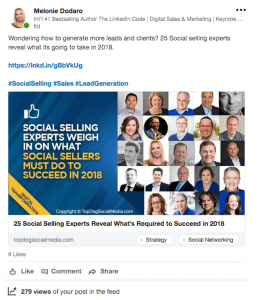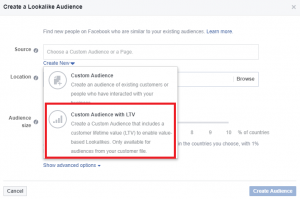Universal IDs show promise as an alternative to cookies, but the space remains immature and confusing.
Something must replace the cookie. It’s due to disappear by the middle of next year.
Marketers are checking out zero-party data, first-party data and cohort analysis. But don’t forget universal IDs.
At its most basic, the UID should recognize the user, compile their information, and share that data with approved partners. How that is done varies, as there is no standardized method or practice for doing this.
“Universal IDs come in two main forms: authenticated and inferred. Authenticated IDs are built by using unique pieces of user data, such as an email address. Inferred IDs are created by device-level data, such as an IP address, user agent string, and device model,” explained Mike Sweeney, head of marketing at adtech and martech software development company Clearcode. “Some universal IDs would use both user-level and device-level data to enrich the IDs and help improve match rates.”
The good news is that the UID is one pathway to a future without cookies. The bad news is that the pathway is not entirely clear, and the future is a bit hazy.
If it is not a cookie, is it a cracker?
Cookies and UIDs both have their limits.
“Every company that sets a cookie has their own ID, and then has to basically do a live exchange of information or share a common cookie space,” explained Rob Armstrong, SVP for product at data transformation company Eyeota. “That’s partly why we’re in this problem because a website could have a carpet bomb of 50 different companies creating cookies.”
“While there is no one-to-one replacement for third-party cookies, universal IDs are probably the closest thing the programmatic advertising industry has to them,” Sweeney said. “However, they lack one key advantage — scale.”
A UID requires a consumer action, like providing an email in exchange for more information, while a cookie is slipped into the user’s browser simply upon visiting a web site, explained Tom Craig, CTO at consumer intelligence platform Resonate. While a cookie can track a user across multiple domains, the UID is limited to the domain the user visits. “This limitation is one of the primary reasons that marketers need to be thinking more broadly than UIDs as they plan their go-forward marketing strategies,” Craig said.
How a user identity is established requires an authentication. “Email is the easiest way to do it in the U.S., where log-ins are usually email address,” observed Chris Bell, VP for Product Management at Oracle. “In Asia, it’s the mobile phone number.”
“You have to shift. Try to meet the user where they are with the piece of personal information they are comfortable giving up,” Bell added.
One size does not fit all
UIDs are not standardized — yet. LiveRamp, The Trade Desk and ID5 are a few among many vendors offering solutions in the UID space.
The Trade Desk’s approach with Unified ID is to generate the UID using the email address provided by the customer, usually in exchange for site access or additional material, Sweeney explained.
“Companies like LiveRamp, Tapad, Signal, Neustar, Zeotap, Epsilon, Flashtalking and others, would also use email addresses to generate an ID,” Sweeney continued. “But they would also use other pieces of deterministic and probabilistic data collected from different sources, e.g. cookie IDs from web browsers, mobile IDs from smartphones, and IP addresses.”
“Proprietary solutions will never get the scale to be viable solely on their own,” Craig said. “Each site needs to implement a solution for it to be addressable, and those sites will not likely implement proprietary solutions.”
“Standardization brings adoption and it brings capital investment. It brings stability, and it’s lacking,” Armstrong said. “This is why we see certain companies having a much more prominent universal ID posture because of their presence in the industry and being a known entity that a lot of companies are working with.”
Many players in a game with few rules
The UID market is young, with about 40 or so vendors all providing solutions, Bell noted. Starting such a company is easy. What’s hard is “getting one to be meaningfully different.”
To succeed, they must “have a strong touchpoint” with publishers, so that they are using that firm’s UID scheme, Bell said. Then you must encourage adoption by adtech providers. It is a game about creating mindshare.
“The lack of standardization around universal IDs isn’t too much of an issue at the moment,” Sweeney said. “However, the sheer number of universal IDs causes issues around interoperability.”
For the digital marketer, it is too soon to place a winning bet on one UID. Some UID solutions revolve around deterministic identification, others rely on probabilistic determination. “It’s not clear at this point what the answer will be,” Bell said. If all these competing UID firms knew the answer, “they’d all be skating towards the puck.” He said. “My hypothesis is [there will be] a rapid winnowing down to a smaller number [of solutions].”
Don’t throw your hands up in despair
UID is young. Best practices are still being discovered. What can marketers do?
“Focus should be more about building relationships with customers and collecting consented personal data,” Bell said. And cover your bets in the vendor landscape. “Putting all your chips on a single UID scheme is risky.” Things will shake out in the next 12 to 36 months.
“It’s definitely a time of testing.” Armstrong said. “Test the parachute before you jump out of the plane.” Try to understand performance in regular browsers with cookies, tested against browsers without cookies, but using UID.
“Also be mindful of the methodology going into it. If it’s probabilistic, then it’s going to be more like a cookie. If it’s deterministic, it’ll look a lot different. And in that case, you could start to think about it a little bit more strategically versus just, does this work?” Armstrong added.
“I think a great first step would be to speak to your existing adtech partners and find out whether they’ve integrated with any of the universal ID solutions,” Sweeney said.
Craig offered this checklist:
- What interactions are had with consumers, both customers and prospects?
- How can those interactions be identified after cookie deprecation?
- Is there an opportunity to capture or request email addresses from those interactions?
- Which identity provider, if any, best suites the business’ needs?
- Does my company have a strategy to increase coverage of identities and collect emails?
“Companies with email and UID collection will be able to work with programmatic platforms to target and retarget those customers,” Craig said. “They will have the ability to know more and take personalized actions with their customers. Without UID collection, marketing will become limited to contextual or cohort-based targets and all personalization will be a thing of the past.”
The post The power and limitations of universal IDs appeared first on MarTech.
MarTech(27)
Report Post








